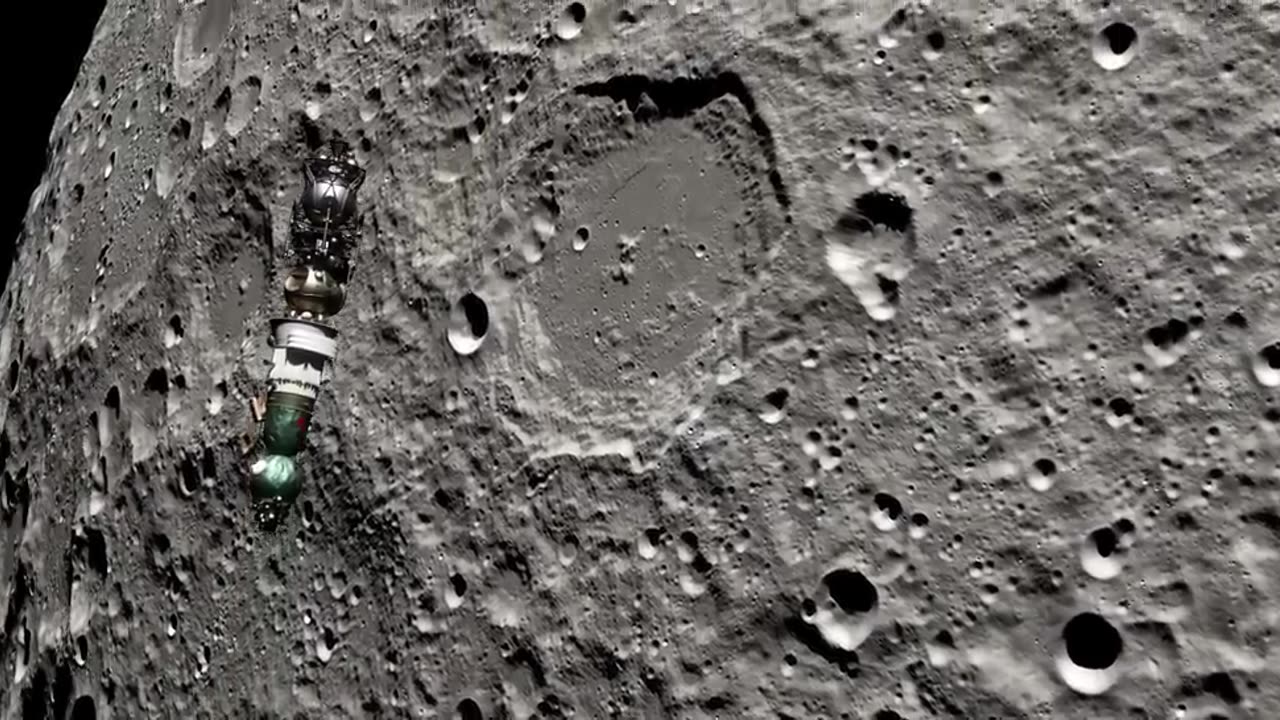Premium Only Content

Moon Landing an Alternative
The LK was a lunar module (lunar lander designed for human spaceflight) developed in the 1960s as a part of several Soviet crewed lunar programs. Its role was analogous to the American Apollo Lunar Module (LM). Three LK modules, of the T2K variant, were flown without crew in Earth orbit, but no LK ever reached the Moon. The development of the N1 launch vehicle required for the lunar flight suffered setbacks (including several launch failures), and the first Moon landings were achieved by US astronauts on Apollo 11. As a result, having lost the Space Race, both the N1 and the LK programs were cancelled without any further development.
Sergei Korolev, the lead Soviet rocket engineer and spacecraft designer during the 1950s and 1960s, planned to adopt the same lunar orbit rendezvous concept as seen in the Apollo program. The lunar expedition spacecraft L3 was to consist of a Soyuz 7K-L3 Command Ship (a variant of the Soyuz) and an LK Lander. L3 would carry a two-man crew atop a single three-stage superheavy N-1 booster. A fourth stage, the Blok G, would push the L3 (LOK+LK) toward the Moon, with the Blok D as a fifth stage.
-
 2:01:25
2:01:25
Roseanne Barr
16 hours ago $33.85 earnedJeff Dye | The Roseanne Barr Podcast #80
112K61 -
 7:32
7:32
CoachTY
14 hours ago $10.01 earnedWHALES ARE BUYING AND RETAIL IS SELLING. THIS IS WHY PEOPLE STAY BROKE!!!
76.7K8 -
 1:01:00
1:01:00
Talk Nerdy 2 Us
10 hours ago💻 From ransomware to global regulations, the digital battlefield is heating up!
29.7K -
 3:00:24
3:00:24
I_Came_With_Fire_Podcast
13 hours agoHalf the Gov. goes MISSING, Trump day 1 Plans, IC finally tells the Truth, Jesus was NOT Palestinian
60.4K28 -
 4:11:49
4:11:49
Nerdrotic
15 hours ago $37.75 earnedThe Best and Worst of 2024! Sony Blames Fans | Batman DELAYED | Nosferatu! |Friday Night Tights 334
186K32 -
 7:55:51
7:55:51
Dr Disrespect
19 hours ago🔴LIVE - DR DISRESPECT - WARZONE - SHOTTY BOYS ATTACK
233K32 -
 1:30:23
1:30:23
Twins Pod
19 hours agoHe Went From MARCHING With BLM To Shaking Hands With TRUMP! | Twins Pod - Episode 45 - Amir Odom
145K31 -
 1:02:30
1:02:30
Exploring With Nug
20 hours ago $4.33 earned2 Duck Hunters Missing After Kayak Capsizes!
68.9K4 -
 46:48
46:48
Mally_Mouse
13 hours agoLet's Hang!! -- Opening Christmas gifts from YOU!
76.4K1 -
 44:55
44:55
Athlete & Artist Show
20 days ago $2.06 earnedNHL 4 Nations Snubs, Was Hawk Tuah Coin A Scam?
72.7K